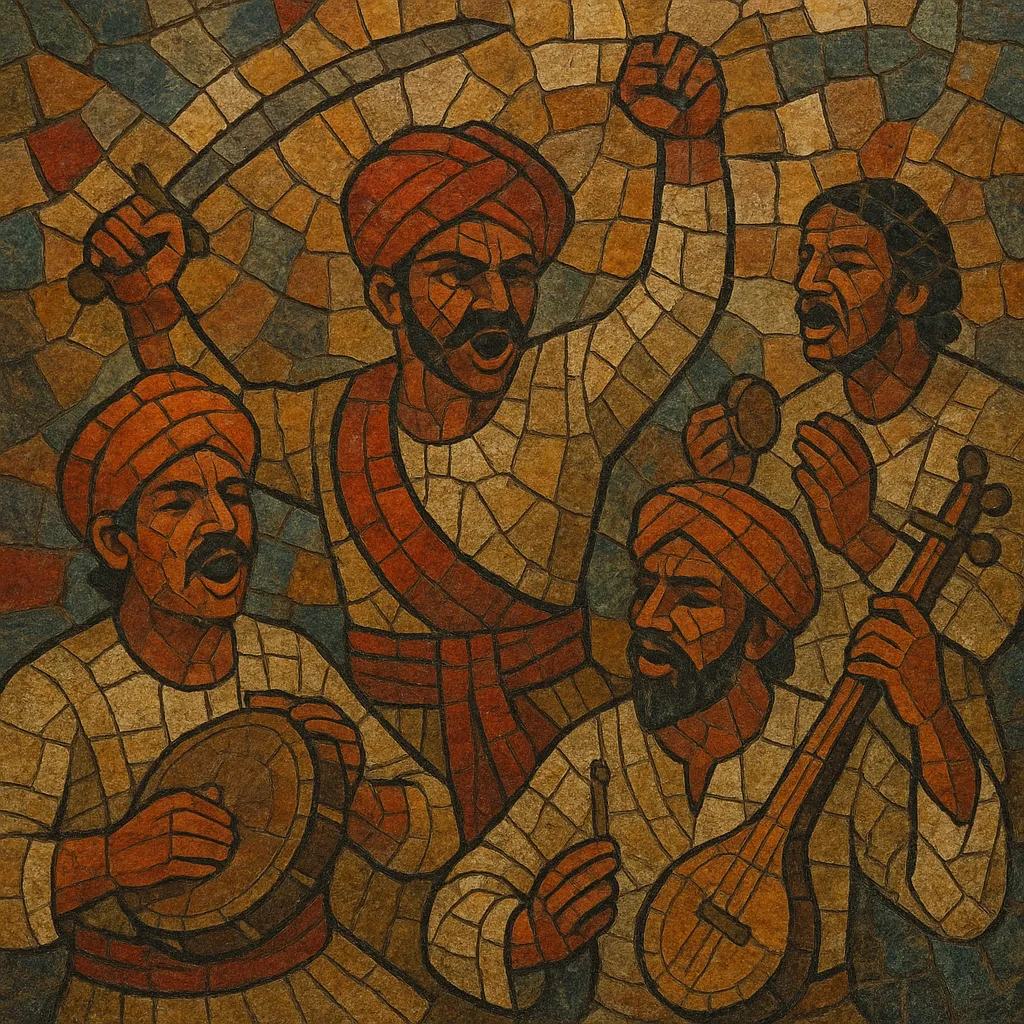Powada is a Marathi heroic ballad tradition from the state of Maharashtra in India. Sung by itinerant poet-performers known as shahirs, it narrates dramatic episodes of warfare, valor, and social struggle in a declamatory, high-energy style.
Typically performed with a small folk ensemble (dholki, halgi, tuntune, manjira/taal, and sometimes harmonium or lezim), Powada blends rousing rhythms, call-and-response refrains, and vivid storytelling. Melodically it draws on Hindustani-leaning folk tunes while staying flexible enough to serve the narrative. The performance is as theatrical as it is musical, with emphatic gestures, shouted slogans, and a stirring chorus designed to move the crowd.
Historically associated with the exploits of Chhatrapati Shivaji and Maratha warriors, Powada later evolved into a vehicle for social commentary and political protest, carried forward by modern shahirs who adapted its heroic tone to contemporary struggles.
Powada emerged in the 1600s within the Marathi-speaking regions of western India, alongside the rise of the Maratha polity. Early powadas celebrated the battles and leadership of figures like Chhatrapati Shivaji Maharaj, rallying communities with heroic narratives, martial imagery, and a strong declamatory delivery. The form crystallized around the shahir (poet-bard), whose role combined historian, propagator of values, and entertainer.
Through the 18th and 19th centuries, powada circulated orally in village squares, fairs, and later in tamasha and loknatya folk-theatre contexts. Performances relied on compact ensembles—dholki/halgi for driving rhythms, hand-cymbals (taal/manjira), one-string drones like the tuntune, and occasionally harmonium. The music remained deliberately flexible, allowing the shahir to shape tempo, meter, and tune to the flow of the story and audience response.
In the mid-20th century, powada was revitalized by shahirs who repurposed its heroic rhetoric for anti-caste, labor, and social-justice movements. Artists such as Annabhau Sathe, Amar Sheikh, and their contemporaries adapted the form to urban audiences, public meetings, and recordings, bringing powada to radio, cinema, and political gatherings without losing its core energy and directness.
Today powada appears on festival stages, in theatre, on television, and across digital platforms. Contemporary shahirs preserve the rousing cadence and chorus while updating subjects to include historical memory, civic pride, and present-day issues. Educational and archival efforts in Maharashtra continue to document classic powadas and mentor new performers, ensuring continuity of this living oral tradition.
Aim for a heroic, declamatory delivery that prioritizes narrative clarity and crowd engagement. The singer (shahir) should project strongly, alternating sung lines with spoken or shouted emphasis.


